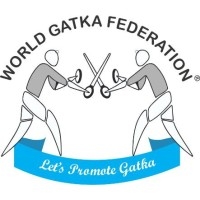INTRODUCTION
Indian martial art ‘Gatka’ is associated with the Sikhs history and an integral part of an array of Sikh Shastar Vidiya developed during 15th century for self-defence. It was a battle technique of Sikh warriors during the martial period of great Sikh Gurus. The present form further perfected into a sport in the later 19th century. Gatka is performed & played in two sub-styles called Rasmi (traditional) and Khel (sport) respectively in the Northern India since 1920.
EFFORTS
METHODOLOGY
Gatka is a style of stick fighting between two or more practitioners, with wooden sticks (called Soti) intended to simulate swords. In Gatka, the “Stick” and “Farri” are also used to substitute the sword and shield respectively for practice and safety purposes. When one exponent attacks, the opponent blocks it and then counter-attacks the player. It entails a sequence of maneuvers involving pattern of footwork coupled with offensive and defensive skills.
BENEFITS
Gatka is a unique art to defend & display fighting skills and exercise self-control which is the best part of this time-tested martial art. Gatka practice also meant to enable youth to stay healthy and agile by keeping them away from the menace of drug abuse and other intoxicants to lead a disciplined and pious life.
REVIVAL & RULES
The World Gatka Federation with a visionary quest, is managing, standardizing, promoting and reviving this traditional art as a game at international level that was in vogue for self-defence since times immemorial. The Gatka Federation has formulated and standardized in-depth Gatka rules and regulations for playing of Gatka game at all levels and providing trainings to the budding Gatkebaaz through workshops, seminars and camps under the prescribed new Gatka rules book. Gatka weapons demonstrations includes Stick and Farri, Chakar, Chain, Dhal, Kirpan, Khanda, Katar, Talwar, Mace, Tir, Dang etc.The Gatka Federations are passionately longing from all the States as well as Central Government to award due gradations to Gatka game certificates at par with the certificates of other games.
RECOGNITION
The Punjab Government and School Games Federation of India (SGFI) have also incorporated the Gatka game into the school games. Various colleges and universities have also included Gatka into their sports calendars on our persistent appeals. Punjabi University Patiala has hosted 2nd All India Inter-varsity Gatka Tournament in January 2014. The Sports Authority of India (SAI) have also recognized Gatka and providing all support to Gatka Training Academy at Amritsar.
Age Groups & Events
There are three events in one age group namely Single Soti, Fari-Soti and Weapon demonstrations. Each event is played as individually and team event. Hence there becomes six events in some age groups. As sub-junior players are under 14 years, that is why the Federation has allowed only four events i.e. Single Soti (Individual), Farri-Soti (Individual) and Weapon demonstrations in individual & team event only. Whereas above Junior level, there are six events in all age groups which are as follows
In all types of Gatka tournaments there are six age groups having six events i.e :
